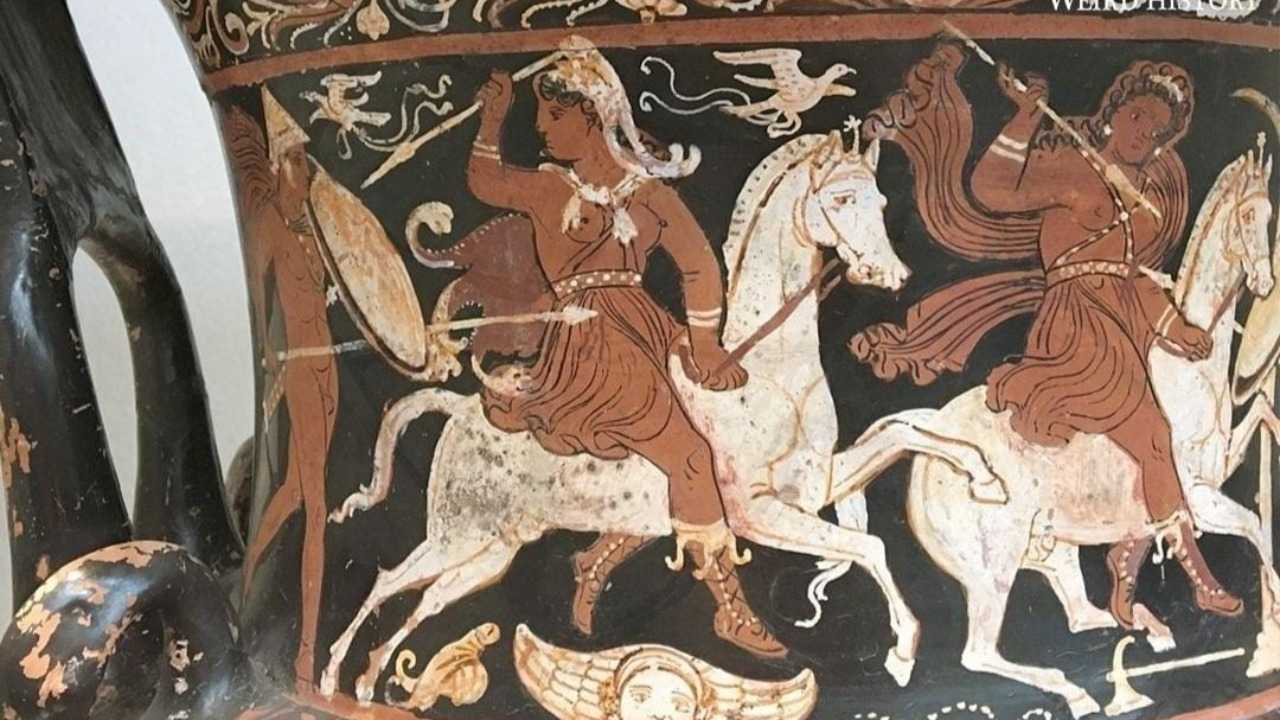Amazon warrior women: more than mere figures in Greek legends, say archeologists after having unearthed graves of women buried with weapons in recent excavations in Nakhchivan, Azerbaijan
According to Greek legends, the Amazons were renowned and formidable female warriors who resided on the outskirts of the known world, on the island of Themyscira. These women were believed to be the offspring of Ares, the mighty God of War.
The Amazons feature in various stories, including the tale of Hercules, who was tasked with acquiring the enchanted girdle of the Amazonian queen Hippolyte as part of his twelve labors. In another legend, the warrior Achilles killed Queen Penthesilea, only to be captivated by her beauty when her helmet was removed.
They were also depicted in adapted movies such as DC's 'Wonder Woman' starring Gal Gadot, who portrays the female warrior, daughter of the God of Sky and Thunder Zeus and Queen Hippolyte, as well as 'Dr. Marston and the Wonder Woman', that tells the tale of the creator behind the iconic superheroine Amazon.
These horseback-riding, bow-wielding nomads, who fought and hunted just like men, have long been shrouded in myth, but archaeologists are discovering increasing evidence that they really did exist, as reported by The Guardian.
Excavations carried out in a Bronze Age necropolis located in Nakhchivan, Azerbaijan, have yielded intriguing findings. The graves contained the remains of women buried alongside weapons such as razor-sharp arrowheads, a bronze dagger, and a mace, as well as jewelry.
Archaeologists have concluded that they could have been Amazon women who lived 4,000 years ago. The fearsome warriors were renowned in ancient Greek mythology for their all-female society and their exceptional skills on the battlefield, particularly in archery.
Historian Bettany Hughes, interviewed by the Observer, noted the significance of this evidence in corroborating the myths and legends of ancient Greece.
The recent findings are also noteworthy when considered alongside previous discoveries. For instance, in 2019, the remains of four female warriors buried with arrowheads and spears were found in Russia, and in 2017, Armenian archaeologists uncovered the remains of a woman who appeared to have died from battle injuries, with an arrowhead discovered in her leg. Additionally, in the early 1990s, the remains of a woman buried with a dagger were found near the border of Kazakhstan. Collectively, these findings contribute to our understanding of the historical realities that may have inspired the tales of the Amazons.
Hughes said: “A civilisation isn’t made up of a single grave. If we’re talking about a culture that crosses the Caucasus and the Steppe, which is what all the ancients said, obviously you need other remains.”
Some of the skeletons reveal that the women had used bows and arrows extensively, Hughes observed: “Their fingers are warped because they’re using arrows so much. Changes on the finger joints wouldn’t just happen from hunting. That is some sustained, big practice. What’s very exciting is that a lot of the bone evidence is also showing clear evidence of sustained time in the saddle. Women’s pelvises are basically opened up because they’re riding horses. [Their] bones are just shaped by their lifestyle.”
She noted that the jewellery includes carnelian necklaces: “Carnelian is a semi-precious stone. You see it often when people are high priestesses or goddesses. So it’s a mark of women with status – as are mace heads.”
The upcoming Channel 4 series titled "Bettany Hughes' Treasures of the World," set to air in April, will feature the recently discovered Amazonian finds. One episode of the series, titled "Silk Roads and the Caucasus," will focus on a region that has been a crossroads of cultures and civilizations for centuries, where trade routes connected Asia and Europe.
In the documentary, Bettany Hughes expresses excitement about the emerging evidence and describes these discoveries as "brilliant bits of evidence" that are gradually being unearthed. She highlights that such stories often unfold slowly, with the most compelling narratives gradually revealing themselves through archaeological finds.
During her visit to the mountain village of Khinalig in the Greater Caucasus, which is regarded as the highest inhabited place in Europe, Hughes notes its remote location and the sense of being lost in time. She highlights that the local language spoken in Khinalig is unique to the village and not found elsewhere.
The village of Khinalig has a long history of human settlement dating back to the Bronze Age. Some of its 2,000 residents share stories passed down through generations, recounting how women in ancient times disguised themselves as men using scarves. This adds to the intrigue surrounding the potential connections between the Amazonian legends and the cultural practices of the region.
She raised ancient stories of Amazons with them: “They said, ‘all of our grandmothers fought. The men were all away with the herds. The women always used to cover their faces to fight’, which is exactly what the ancient sources said, so that people didn’t know whether they were women or men.”
